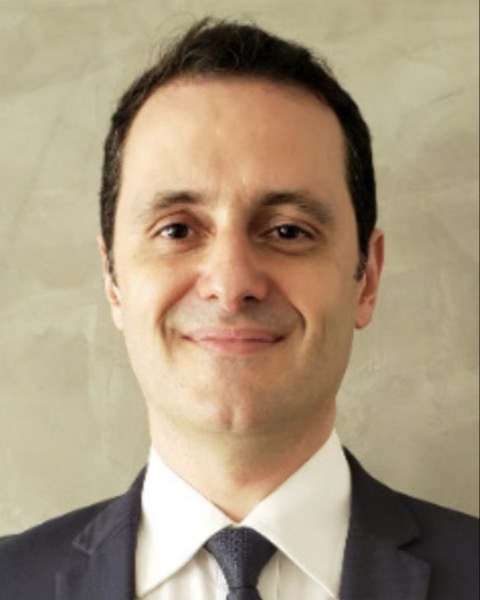SIR 2025
Nonvascular Interventions
Scientific Session
Late Breaking Abstracts
Ultrasound-Guided Percutaneous Cryoablation of Benign Thyroid Nodules: A Pilot Study

Ricardo M C Freitas, MD, PhD, MBA (he/him/his)
Professor of Radiology
Instituto de Radiologia - INRAD HCFMUSP, Brazil- FV
Felipe A B Vanderlei, MD, PhD
Head and Neck Surgeon
Head and Neck Surgery Department HCFMUSP, Brazil - MR
Matheus G. Rosenfeld, MD
Head and Neck Surgeon
Head and Neck Surgery Department HCFMUSP, Brazil - AB
Alessandra P P Borges, MD
Radiology Assistant
Instituto de Radiologia - iNRAD HCFMUSP, Brazil - DD
Debora L S Danilovic, MD, PhD
Professor of Endocrinology
Endocrinology Department HCFMUSP, Brazil - SM
Suemi Marui, MD, PhD
Professor of Endocrinology
Endocrinology Department HCFMUSP, Brazil - LK
Luiz Kowalski, MD, PhD
Full Professor
Head and Neck Surgery Department HCFMUSP, Brazil - MC
Maria Cristina Chammas, MD, PhD
Professor of Radiology
Instituto de Radiologia - INRAD HCFMUSP, Brazil
Presenting Author(s)
Author/Co-author(s)
To assess feasibility, safety and efficacy of ultrasound (US) guided percutaneous cryoablation of benign thyroid nodules; volume-reduction ratio (VRR) up to 12 months and presence or absence of calcifications {1-6}.
Materials and Methods:
This IRB approved prospective single arm, tertiary single-center pilot study (Clinical Trials: NCT06014229) enrolled 10 patients. Inclusion criteria were: patients > 18 years old; fine needle aspiration biopsy-proven of non-functioning or functioning benign thyroid nodules (TNs) under 65 mL of volume in symptomatic patients. Outpatient US-guided cryoablation sessions were performed under moderate sedation / general anesthesia (n=3) or local anesthesia (n=7). One argon-based cryoablation probe was used for each treatment session. Cryoablation protocol included multiple overlapping double or triple 3-min-freeze- 1-min-thaw cycles. Protective hydrodissection was provided in all cases. Follow-up was carried out 1, 3, 6, and 12 months with US and laboratory examinations. Prior outcomes evaluated technical feasibility; TN volume reduction ratio (VRR) = ([initial vol. - final vol.]/initial vol. x 100); and incidence of adverse events (AE).
Results:
Ten patients (9 women, 90%) with a mean age of 55.9±12.7-year-old (range 35-73) were treated. Mean±SDbaseline thyroid stimulating hormone (TSH), free T4 and thyroglobulin (Tg) serum levels were: 0.78±0.43 mUI/L, 1.03±0.21 ng/dL, and 258.9±417.2 ng/mL and remained stable overtime. Non-functioning TNs were n=9 (90%). Technical feasibility was 100%. No procedure-related complications were observed. One mild adverse event (transient vasovagal reaction) occurred in one patient during cryoablation secondary to a self-limited cervical hematoma. Mean±SD baseline TN volume (mL) was 26.09±13.92 (n=10). Mean±SD 1-, 3-, and 6-month TN volume (mL) were, respectively: 16.42±10.12 (n=10); 8.70±5.94 (n=8); 7.80±6.18 (n=6). Statistical analysis showed an increasing VRR up to 6 months (p < 0.05), being 37.06% VRR at 1 month, 66.65% at 3 months, and 70.10% at 6 months. The VRR at 12 months was 52.84% (n=3), with partial volume regrowth observed in 2 cases. A 40% nodule calcification rate observed at baseline persisted overtime.
Conclusion:
Cryoablation was feasible, effective and safe for the treatment of benign thyroid nodules and may be an alternative to surgery in selected cases. One potential advantage is to avoid nodular calcifications overtime, to be confirmed in larger multicentric trials.


.jpg)